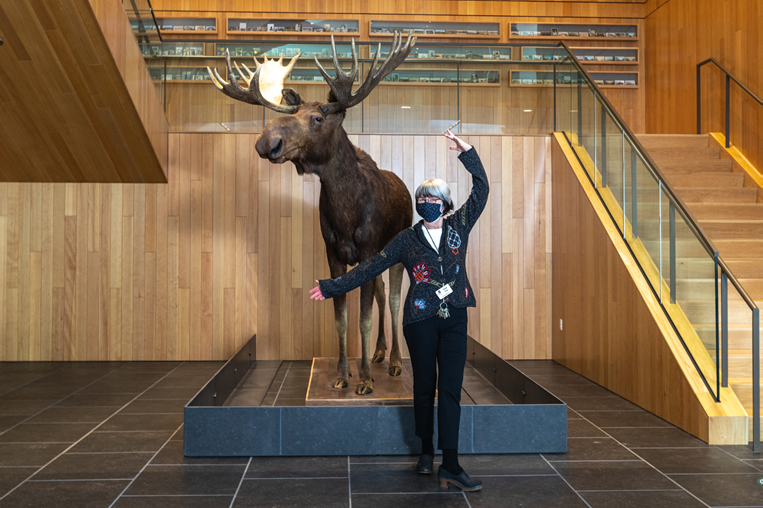
Since 1951, the Benton County Historical Society (the “Society”) has been preserving historical artifacts, photographs, and manuscripts. After Philomath citizens prevented the demolition of the 1867 Philomath College building and placed it on the National Register of Historic Places, the Society opened the building to the public in 1980 as a history museum, research library and art gallery.
Open year round, the museum in Philomath offers educational programming for audiences of all ages, including a lecture series, seminars, and workshops for adults and special initiatives designed for K-12 grade students and their teachers. Of the 100 schools in the three-county area, an estimated 86 have used the museum’s outreach program, including the “History in a Trunk” traveling program, for their students. This program allows teachers to borrow trunks packed with replicas of historic objects and a comprehensive teacher’s guide for a hands-on classroom experience where students learn what life was like for 19th century children.
Each year the museum hosts a children’s art exhibit for students in the local school district. These exhibitions provide a venue for the creative efforts of nearly 1,000 students each year. Displayed in the museum’s Moreland Auditorium, each exhibit has an opening reception for students to invite their families and friends to share in their accomplishment of having their work exhibited in a museum setting.
Partnering to create resources for perpetuity

“A museum is a collecting organization, and the objects you collect are held in the public trust,” said Irene Zenev, Executive Director of the Benton County Historical Society. “Once you take on that obligation you have to preserve those collections in perpetuity. We’re obligated to always be around, so we have to find ways to make sure the public has access to the objects we’ve collected.”
The Benton Community Foundation, too, manages assets in perpetuity, so in 2005 the Historical Society opened an endowment at BCF to create a reliable and long-term source of funding for BCHS’s operations.
When construction on BCHS’s Corvallis Museum was completed in 2020, BCHS renewed its effort to grow sustainable funding for the future. With a goal of $10 million in endowed funds, BCHS is looking ahead to provide operations support so the organization can continue to present exhibitions and programs for community members for decades to come.
“My theory is, you have to have the highest quality project and programming you can strive for,” said Zenev. “People respond to quality. When we presented people with the new museum design and people saw how innovative and remarkable it was, they wanted to be part of it. You have to do the very best job you can.”
Contributions to the Historical Society’s endowment can be made directly here.
A new home for the Horner Collection
The Society’s role as a regional resource expanded significantly when it was offered the collection of the former Horner Museum, once located on the campus of Oregon State University. By the time OSU closed the Horner Museum in 1995 due to University-wide budget cuts, the collection had grown to nearly 60,000 objects. This unique and important collection remains locked in the former Horner Museum site in the basement of Gill Coliseum on the OSU campus. The Society has embarked on an $8.5 million capital campaign to build a museum in downtown Corvallis to provide access to this remarkable collection, which is an educational tool of unimaginable potential for Benton County residents and visitors.
Although the University retains possession of the Horner collection until the new facility is ready, the Society has the responsibility for its care. While fundraising and renovation plans for the new museum proceeded, Society staff and volunteers have dismantled dozens of exhibits and improved recordkeeping and storage conditions of this immense collection. An exhibit design firm has been contracted to complete a plan for a new exhibit gallery that will include traditional interpretive exhibits and many artifact-rich displays. Visitors will be able to view a visible storage area through large windows to watch as museum staff and trained volunteers work with the collection.
The Horner Museum was the product of decades of collecting and interpreting historical materials for students and the surrounding community to study and enjoy. In 1925, John B. Horner, professor at Oregon Agricultural College, consolidated several existing collections on the campus–some dating back to the 1840s, solicited other donations of historic objects and natural history specimens, and opened the Museum of the Oregon Country. It was the first museum in the mid-valley. Horner, a longtime professor of English, Latin, and history was the first curator of the museum. He gathered collections from around campus, including zoology, commerce, other OSU departments, and area collectors. The collection reflects and emphasis on prehistory, fauna, pioneer artifacts and world travel.
Upon Horner’s death in 1934 the museum was renamed in his honor. It was maintained essentially as he had started it until the mid-1970s. The Horner collection remains one of the largest single collections in amount and degree of significance to Oregon. In addition, many of the object in the Horner collection are of national significance. Annual visitation averaged of 40,000 for the past five years it was open.
The board of directors of the Society established the Benton County Historical Society Endowment fund to ensure annual income in perpetuity to defray the cost of operations.
